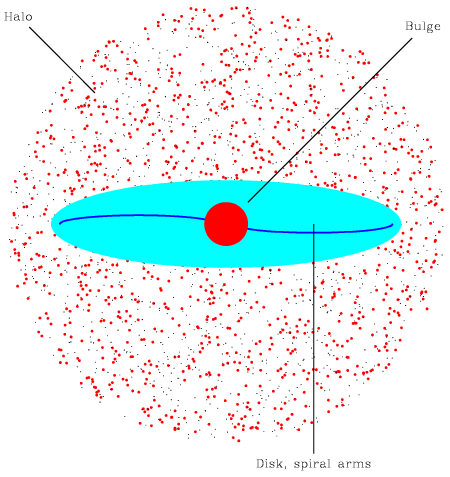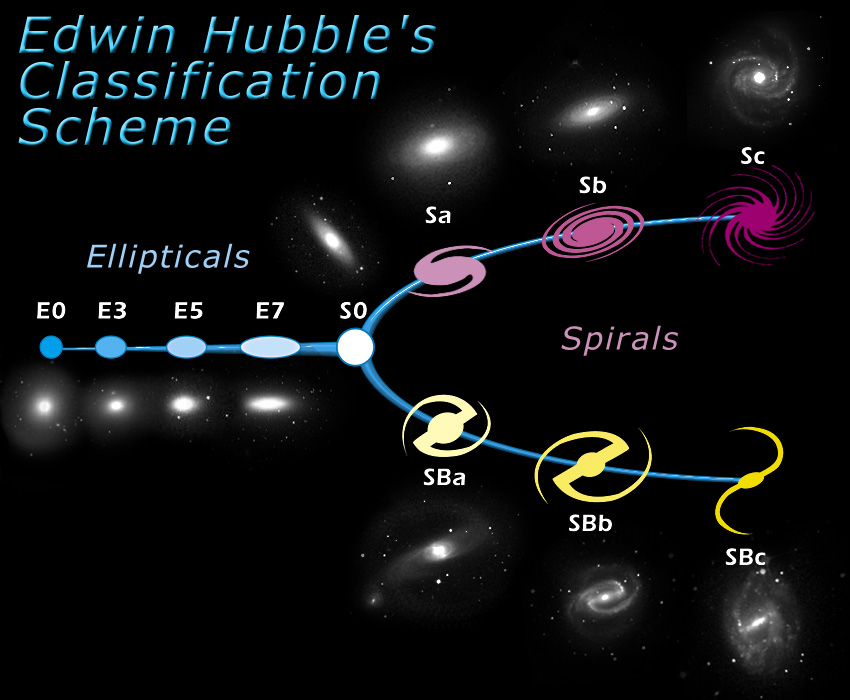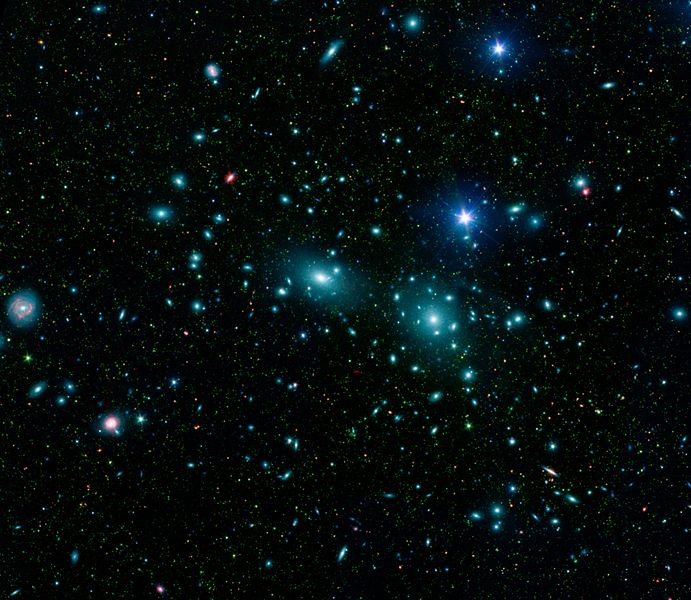 |
| Galaxy structure: central bulge, thin disk, and diffuse outer halo |
| [NMSU, N. Vogt] |
Here is the basic form of an isolated galaxy
We can observe the stars in the galaxy bulge and disk, finding both individual stars, stars in binary or tertiary solar systems, and stars grouped tightly together in clusters. We cannot observe dark matter directly with telescopes, because it does not shine like stars in the visual or produce radio emissions like hydrogen gas. Why then do we think it is present in the halo? We see the effect of its gravitational attraction upon the luminous matter, and thus infer its presence. In fact, the dark matter outweighs the luminous matter by a large fraction, much like the ratio of birthday cake to cake frosting!
 |
| Galaxy structure: central bulge, thin disk, and diffuse outer halo |
| [NMSU, N. Vogt] |
When people first began to observe significant numbers of galaxies, they categorized them according to their optical morphology (appearance) on the sky. Edwin Hubble built up a chart of different types of galaxies. We call this the galaxy tuning fork because it resembles a musical tuning fork in form (a handle on the left, with two tines projecting to the right). Elliptical, round galaxies were classified according to how round or oval they appeared. Spiral galaxies were divided into two families, those with and those without a central barlike structure. The progression through the spiral families indicated the degree to which the spiral arms were wound tightly, and how large they appeared relative to the central bulge. A final, catch-all class was established for irregular galaxies, containing all of the galaxies which didn't fit into nice, neat bins.
 |
| Galaxy tuning fork, showing the progression through elliptical, spiral, and irregular types. |
We will be looking at pictures of individual galaxies. But it is worth remembering that galaxies are found in all sorts of environments, from the splendid isolation of the empty field to the hearts of gigantic clusters (composed of thousands of galaxies tightly clustered together). This image shows one such gigantic cluster. If you look closely at the image, how many galaxies can you see?
 |
| The Coma galaxy cluster in optical and infrared wavelengths (made up of thousands of galaxies!) |
Recall that light takes a finite time to travel from place to place, so for galaxies which lie far away from Earth, an appreciable amount of time (up to billions of years) may pass before the light emitted reaches us on Earth.